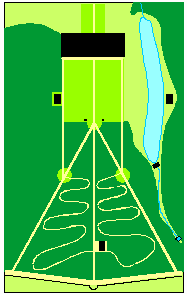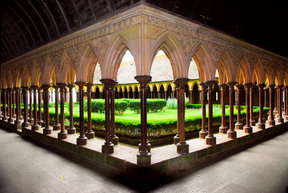
The Augustan Garden was developed as a style in the 18th century that wanted to revisit and adhere elements of the past, of the Roman style garden and yet still allude to the English garden. This was the era of the birth of Freemasonry and the Romantic poets, and an atmosphere that desired to achieve a type of literary and artistic beauty. Sculpture and adornments were especially helpful in pointing out and connecting the visions of the designer with the key elements of the past. This century saw a collective response to industrialism from the "artistic" front and many were trying to recapture the ideals of the Medeival period. Much like Marx saw about the negative consequences that capitalism could bring, perhaps few of these Romantics and anti-industrialists also saw a dark cloud above the skies of the new industry, that wasn't only pollution from the factories.


The Corinthian style is more ornate, utilizing fluted columns and acanthus leaves.

Once again, Baroque meets Naturalism in the Russian palace and park of Pavlovsk, a great estate on 307 hectacres of land near St. Petersburg given to Tsar Pavel, by his mother; Catherine the Great. The palace is designed in the St. Petersburg neo-classicist style, but the two architects who worked on it had differing views; Cameron loved the understated Palladianism and Brenna probably loved not being on the Tsar's bad side by altering the work of Cameron. The gardens are designed also, by Capability Brown and include naturalism as well as the theatrical baroque infused vistas. The private gardens only for the family, were more formalized and bedded down.
 |
| Pavlovsk Park |
 |
| Pavlosk Palace |
Rousham gardens, near Oxford in England was built in the early eighteenth century by William Kent, a reknowned British architect, landscape architect, and furniture designer, who did most of his studying in Italy. They also have the characteristics of Naturalism and added folly to accentuate the Roman period in many of the different garden rooms.
It is worth noting that all of these temples, obelisks, and other statuesque gestures, whether they are pyramids or mauseoleums all have one thing in common, besides the Roman overtures; they are associated with Freemasonry. Whether or not all of the property owners or architects were freemasons; as it was new and popular at this time is not determined, however the fact that so many of these landscapes were tended to by people who believed in this society is a fact and so are the symbols they planted on the land.
 |
Rousham Palace Freemasonry gone wild. Freemasonry gone wild.
Other Augustan Landscapes
|
 |
| Woerlitzer Park, Germany |
 |
| Park an der Ilm, Germany |





